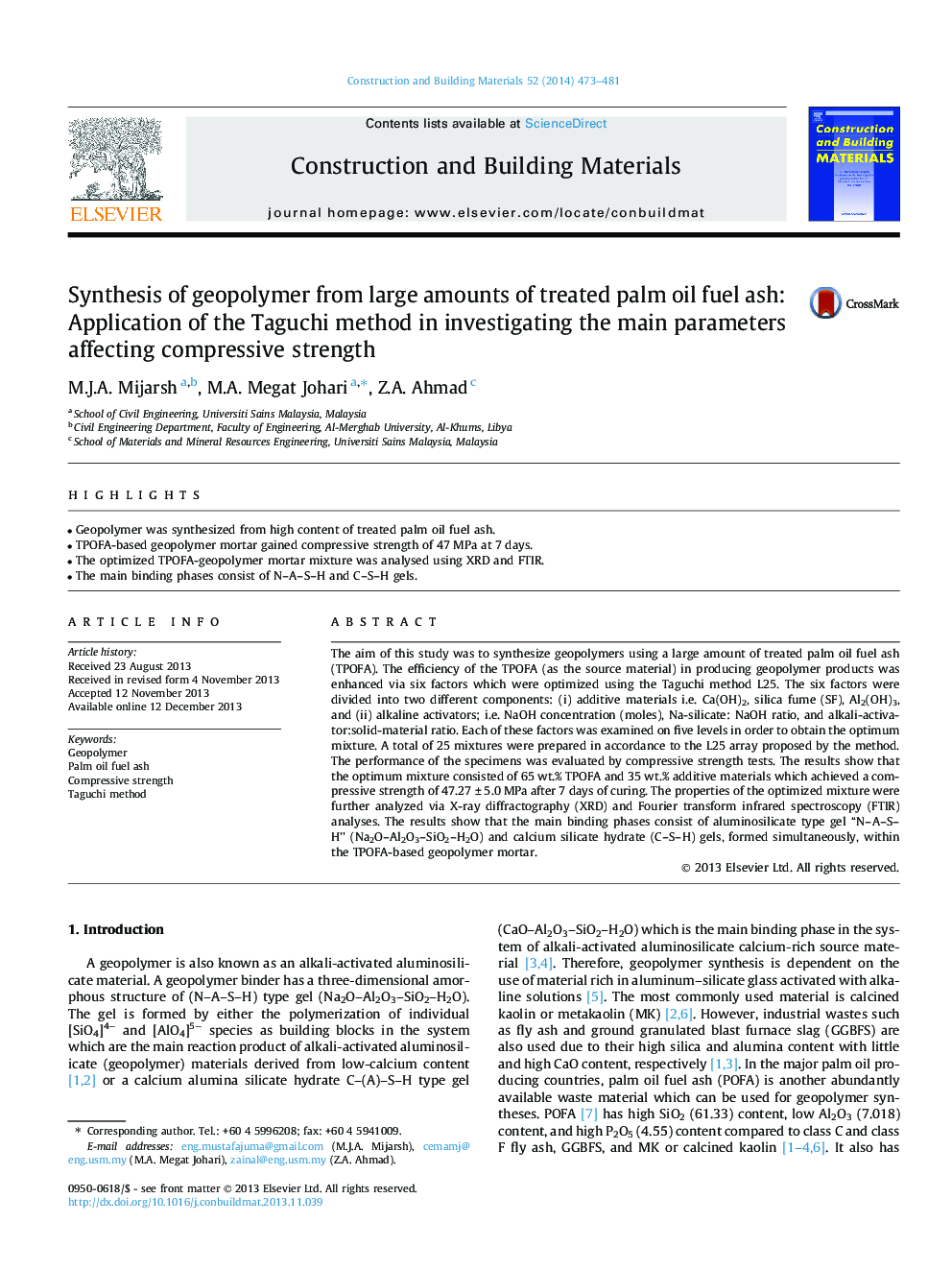| Article ID | Journal | Published Year | Pages | File Type |
|---|---|---|---|---|
| 6724602 | Construction and Building Materials | 2014 | 9 Pages |
Abstract
The aim of this study was to synthesize geopolymers using a large amount of treated palm oil fuel ash (TPOFA). The efficiency of the TPOFA (as the source material) in producing geopolymer products was enhanced via six factors which were optimized using the Taguchi method L25. The six factors were divided into two different components: (i) additive materials i.e. Ca(OH)2, silica fume (SF), Al2(OH)3, and (ii) alkaline activators; i.e. NaOH concentration (moles), Na-silicate: NaOH ratio, and alkali-activator:solid-material ratio. Each of these factors was examined on five levels in order to obtain the optimum mixture. A total of 25 mixtures were prepared in accordance to the L25 array proposed by the method. The performance of the specimens was evaluated by compressive strength tests. The results show that the optimum mixture consisted of 65 wt.% TPOFA and 35 wt.% additive materials which achieved a compressive strength of 47.27 ± 5.0 MPa after 7 days of curing. The properties of the optimized mixture were further analyzed via X-ray diffractography (XRD) and Fourier transform infrared spectroscopy (FTIR) analyses. The results show that the main binding phases consist of aluminosilicate type gel “N-A-S-H” (Na2O-Al2O3-SiO2-H2O) and calcium silicate hydrate (C-S-H) gels, formed simultaneously, within the TPOFA-based geopolymer mortar.
Related Topics
Physical Sciences and Engineering
Engineering
Civil and Structural Engineering
Authors
M.J.A. Mijarsh, M.A. Megat Johari, Z.A. Ahmad,
